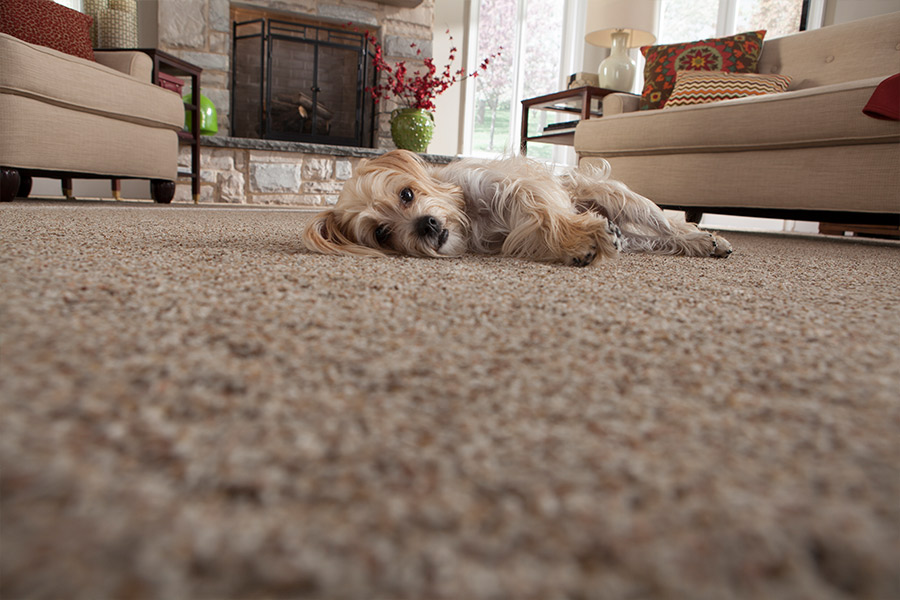I used to think choosing carpet was just about picking a color that matched the walls or a pattern I liked. But when I began redesigning my home, I quickly realized that the world of carpeting is far more complex than I’d imagined. I was overwhelmed with choices: cut pile, loop pile, plush, saxony, berber… and I found myself diving into the differences between cut pile vs loop pile carpet like someone who had just discovered an entirely new interior design universe.
What drew me to cut pile from the start was its incredible softness. It felt like walking on clouds. This type of carpet is designed with fibers cut at the top, creating a smooth and velvety surface. As someone who’s always barefoot at home, that level of comfort really won me over.
I chose a plush cut pile carpet for my living room — charcoal gray, thick fibers, high resilience. Once installed, the space felt warmer and more elegant almost instantly. I still remember the moment my son ran across the carpet barefoot and shouted, “It feels like I’m jumping on a bed!” That’s when I knew I had made the right choice.
But as it turns out, that wasn’t entirely true. A few months into using it, I started noticing issues I hadn’t anticipated.
The more I used the carpet, the more I noticed a major drawback: it reacts visibly to every little impact. Every time someone walked by, it left a clear footprint. After vacuuming, streaks from the vacuum head would remain — something I previously thought only happened with cheaper rugs.
Especially with plush cut pile — the type I had — the fibers were thick and high. That meant dust particles got trapped easily. I had to vacuum at least twice a week just to keep it looking fresh. Fine sand tracked in from shoes or strands of hair from family members would all seem to vanish into the pile, only to be discovered when I ran my hands through it.
And when spills like coffee or juice happened — cleaning was a nightmare. The fibers absorbed liquid fast and deep, making stain removal a challenge.

I’m not a technical person, but once these inconveniences started popping up, I was determined to understand why cut pile behaved the way it did. It turns out the answer lies in its fiber construction.
Cut pile carpets have loops that are cut at the top, resulting in upright, open fibers. Common types include plush, saxony, textured, and frieze.
I had chosen plush for its silky softness and luxurious feel, but I hadn’t realized it wasn’t ideal for high-traffic areas.
=>>> Don't let choosing a carpet become difficult. See the difference between cut pile and loop pile to make an informed decision.
A friend of mine, who was also renovating her home, went with loop pile instead of cut pile for her living room. She told me, “I can’t stand seeing footprints on my carpet. It makes it look years older.” That made me rethink my own decision, and I began to explore more seriously the differences between cut pile vs loop pile carpet.
Loop pile carpets retain their original looped shape instead of being cut at the top. This gives them greater durability and resistance to compression. Footprints and vacuum marks don’t show as easily. Loop pile is also significantly more wear-resistant — ideal for high-traffic areas like hallways, offices, or even living rooms.
What impressed me most was how much easier loop pile was to clean. Dust and debris didn’t sink as deeply into the fibers as they did with cut pile. And because of its looped construction, it also resisted fraying and damage better over time.
However, loop pile didn’t offer that soft, cushiony feel underfoot that I loved about cut pile. That left me torn: I wanted softness, but I also needed practicality and easy maintenance.
After my hands-on experience, I came to a major realization: there is no perfect carpet — only the perfect carpet for your specific needs.
If you’re looking for carpet in a bedroom — a space that doesn’t see much foot traffic and is meant for relaxation — then cut pile is a fantastic option. Especially plush or saxony — they make the room feel warmer, more luxurious, and super comfortable.
But if you're carpeting a living room, hallway, or any high-use area, loop pile deserves serious consideration. Even though it’s not as soft, it can save you a lot of time and energy on upkeep.
=>>> Are you curious about the structure and characteristics of different types of carpets? Explore the options of cut pile and loop pile now.

Despite the initial disappointments, I can’t deny that cut pile offers an unparalleled sense of comfort and elegance. But with the knowledge I have now, if I could go back and choose again, I wouldn’t use plush cut pile in the living room.
Instead, I’d go for frieze — also a type of cut pile, but with more tightly twisted fibers. It hides footprints better and is more durable. Or maybe I’d reserve plush cut pile for the bedroom — a place where it can truly shine.
I’ve learned that choosing carpet shouldn’t just be about emotional reactions or aesthetic appeal. Understanding the fiber structure, durability, ease of maintenance, and suitability for a particular space is absolutely essential.
And perhaps most importantly — trust your own experience. Carpeting isn’t just flooring — it’s where your feet land every day. It shapes the comfort and vibe of your home. So don’t hesitate to spend time learning — just like I did when I began my journey from comparing cut pile vs loop pile carpet to finally being confident in the flooring choices I made for my home.